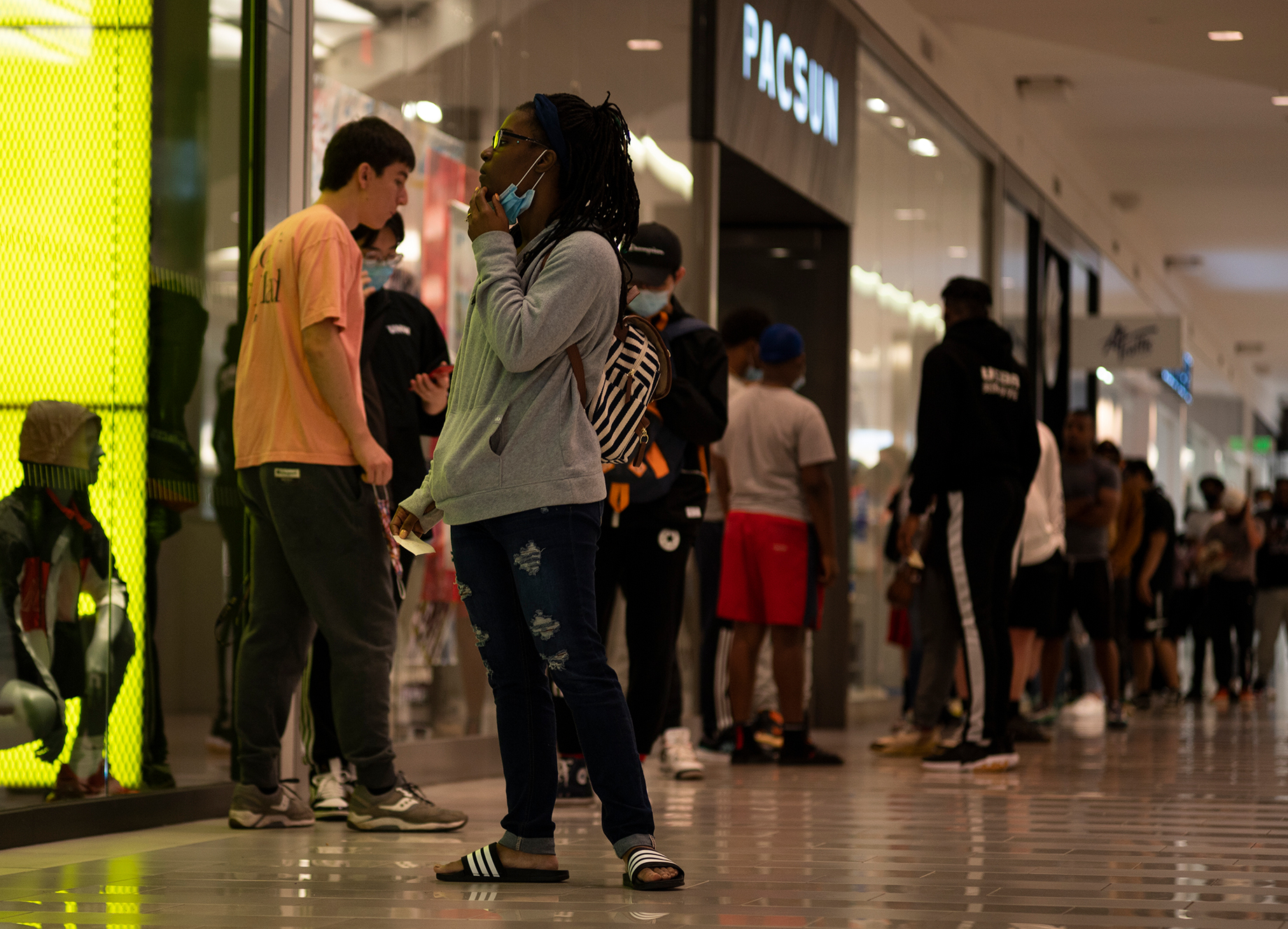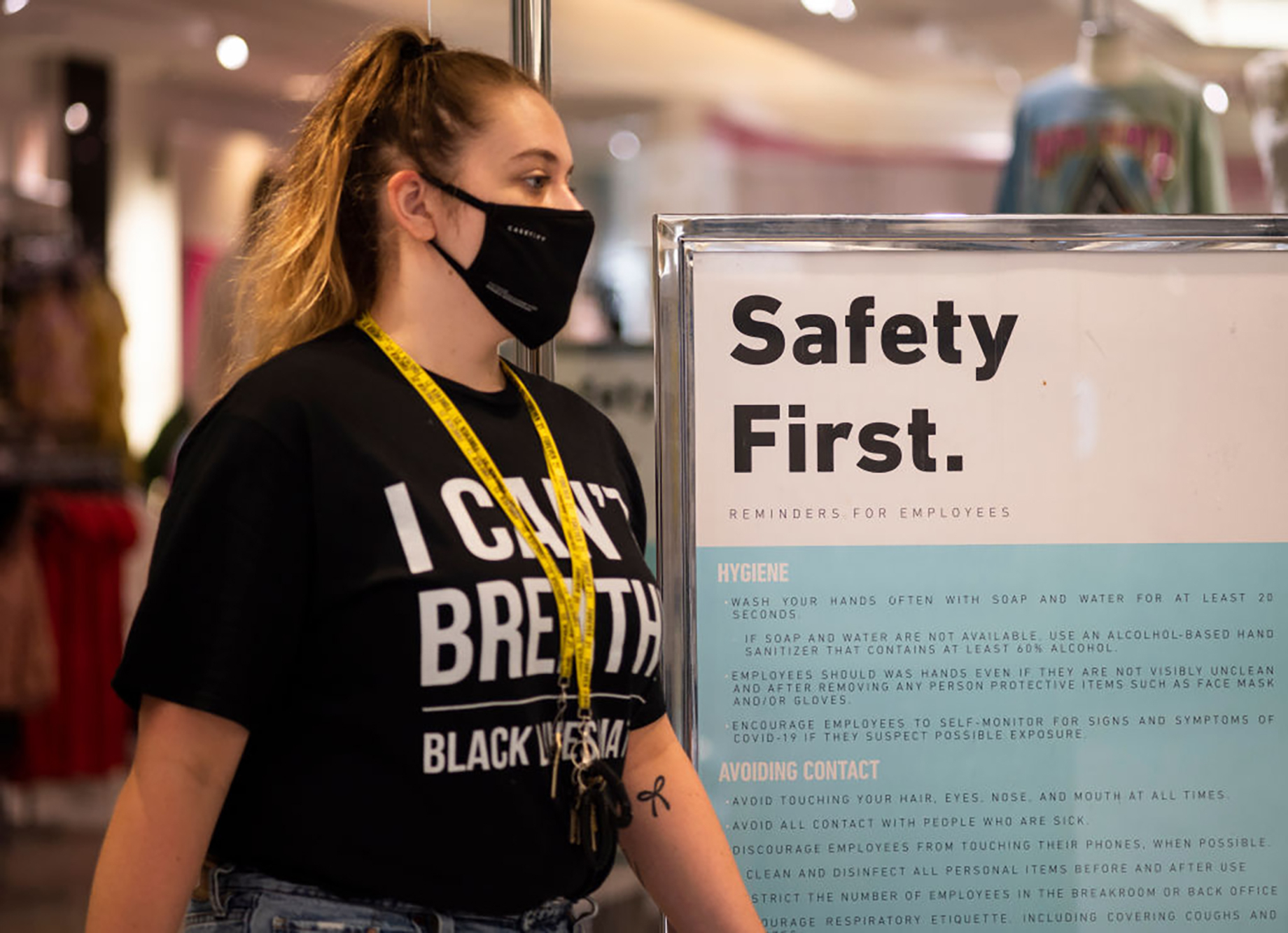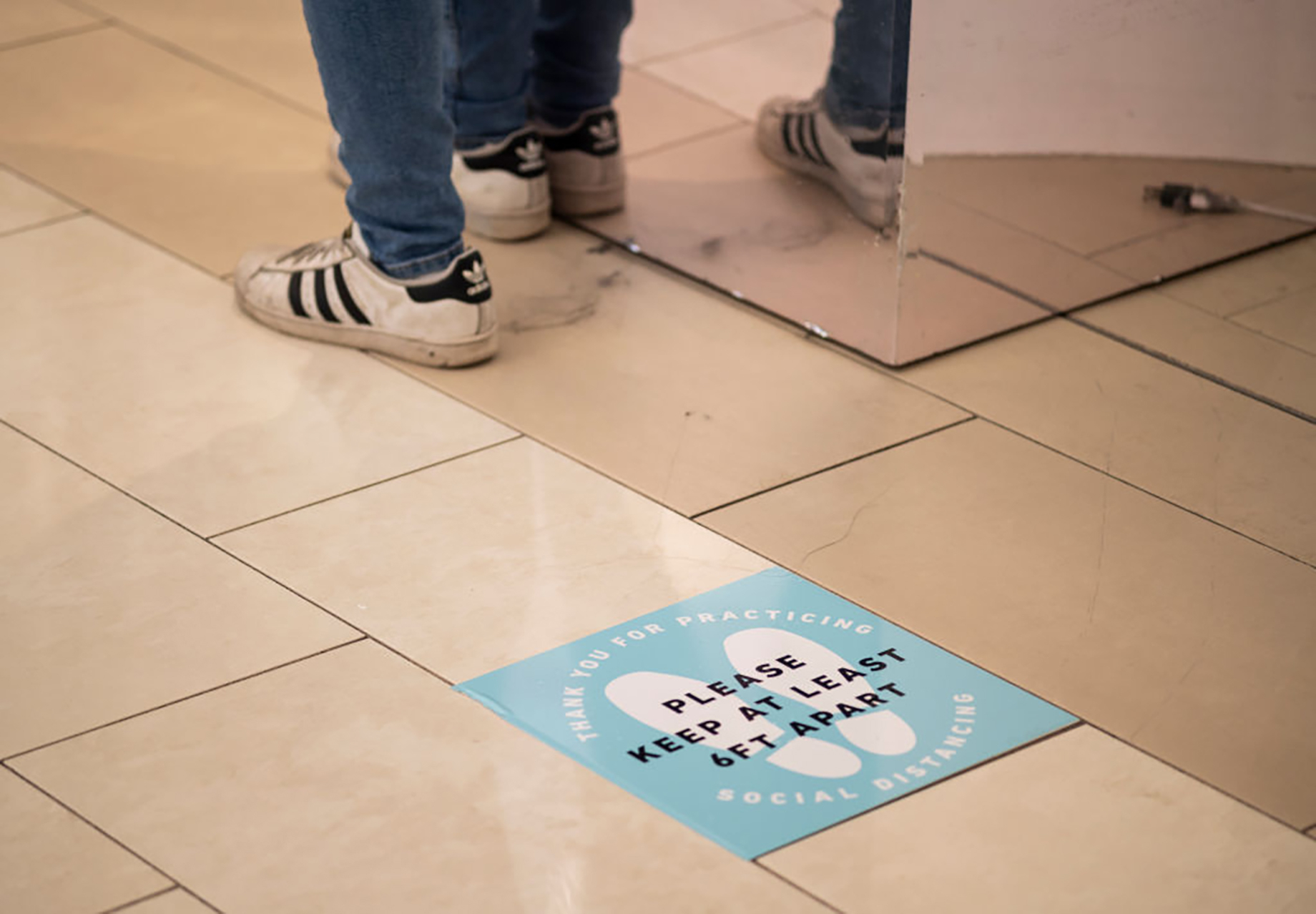Almost three months after closing its doors March 17 in line with a state-ordered COVID-19 shutdown, Mall of America reopened for business today. Yet activities at the 5.6 million-square foot megamall is by no means business as usual. Rather, the tentative first step of reopening comes with new safety protocols and reduced operating capacity.
State guidelines that allow malls to open at half their normal capacity have shaped much of Mall of America’s plan. Its reopening focuses primarily on its retail stores. Food-and-beverage, hair and nail salons, spas and entertainment tenants, including the Nickelodeon Universe amusement park and Sea Life aquarium, have yet to receive state approval to reopen. Restaurants can provide takeout or counter service, which has required the mall to block off or remove all food court seating. The mall also has tabled its line-up of special events, typically 400 each year, due to rules that limit the size of gatherings.

People line up at a store inside Mall of America before it reopens on June 10
“The key message right now is safety. We need to make sure that people feel comfortable when they come back,” said Mall of America executive vice president of marketing and business development Jill Renslow. The mall’s new protocols are similar to those that essential retailers have put in place, such as social distancing markers on floors, directional signage, hand sanitizer stations, rigorous and frequent cleaning, and Plexiglass barriers at points of sale and at guest services.
Importantly, the focus on drawing crowds to the mall has shifted to limiting foot traffic, not an easy task for a mall that attracts an estimated 40 million annual visitors. Mall of America has reduced its parking capacity from more than 17,000 spaces to 8,400. This step includes closing entire levels within its two parking garages and closing all or part of its surface lots. The mall also will monitor visitors coming in through its MetroTransit light-rail stop.

Signage notes new guidelines
“It’s not just about the capacity but how do you manage the traffic once people are in the building,” added Renslow. “So we want to make sure our staff is trained and ready to respond, and we also have technology that helps us read those traffic patterns to see where we might have hot spots throughout the building.” For example, the mall intends to use pedestrian counters, security cameras and Wi-Fi usage data to monitor traffic flow and identify areas of congestion.
In order for people to maintain social distancing, mall management will handle lines that spill over from retailers into the common areas. The mall also will run shorter daily hours: 11 a.m. to 7 p.m. Some retailers will modify their hours further based on corporate policies and have their own protocols for the number of people in their stores at once. The key will be to communicate stores’ opening status and hours via the mall’s website, especially as things still are changing quickly, says Renslow.

Signage asks people to socially distance outside a Mall of America store
Mall of America also has been communicating the mall’s health and safety plan, an effort to provide a template for the stores, to its 520-plus tenants, of which about 175 are small businesses. And the mall has worked to provide support and resources where needed, whether facilitating curbside service or providing information on employment services for a tenants’ employees. The mall uses its MOA Tenant Hub mobile app, powered by Mallcomm, to distribute to tenants updated information on reopening, as well as resources for state and federal relief that is available to them.
Going forward, MOA is working closely with Minnesota as the state develops protocols for entertainment venues and themed attractions to reopen. “What’s really important for Mall of America is that we haven’t been doing this in a vacuum,” said Renslow. The management team has been collaborating with shopping center managers locally and nationally and talking with operations teams from other attractions to learn about reopening efforts in other states. Those lessons help create not only a smooth reopening for Mall of America but also consistency across the industry, she adds.
“Reopening in a phased approach will definitely allow us the opportunity to learn how the traffic patterns will work and how guests will go through our building with interactions and new safety protocols,” said Renslow. “We have already put a lot of safety protocols in place, but we also want to make those modifications as needed.”
By Beth Mattson-Teig
Contributor, Commerce + Communities Today


